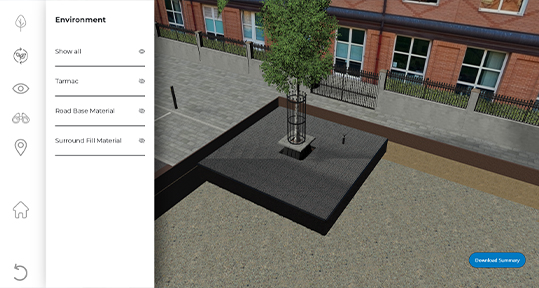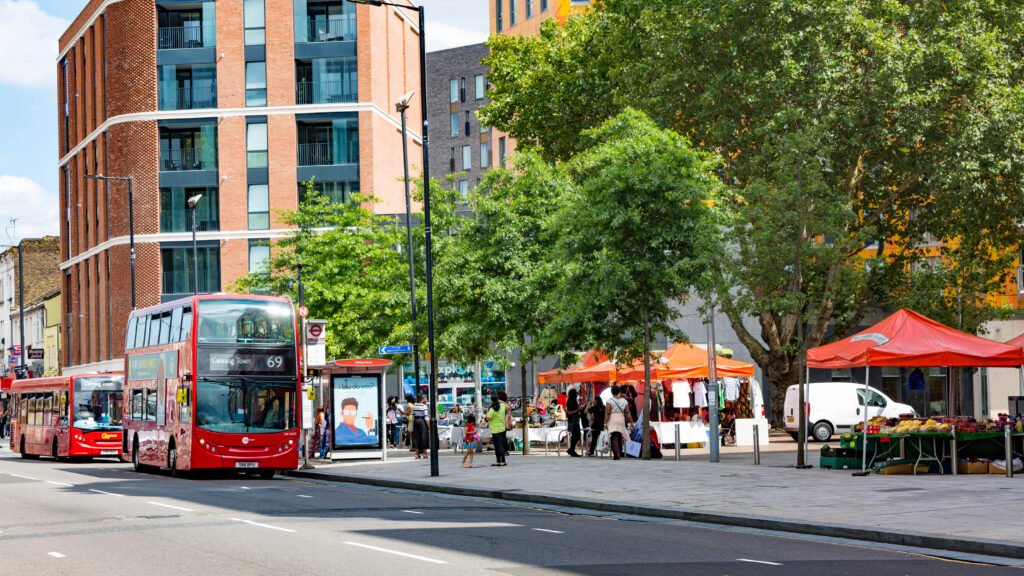The city of Derby in central England has long been associated with industry; there are suggestions that even the Romans had some sort of industry there. Over the centuries many different types of businesses have had their base here: textiles, china manufacture, railway engineering and in the 20th Century, Rolls Royce and Toyota have made their homes here.
However, the biggest change came to this market town when the railway arrived. The River Derwent and the Roman road system had provided travel until then, but this central position in the country meant that Derby was a great place to travel from, and to. This central railway plant, with manufacturing depot encouraged many railway workers to settle here, and the town grew fast, gaining city status in 1979.
In the central area north of the railway station factories became established, usings the railways, roads and the canal to ship their goods in and out of the city. The main city centre became separated from the station by this industrial growth, and many slum houses near the city centre were cleared in the inter-war years.
The Castlefields estate became a brownfield site during the later part of the last century, and Derby City Council partnered with a developer, Compendium Living to breathe new life into this area. With a 5 phase, 20 year development plan, this zone was planned to become a new residential hub, with a new school, 800 new homes and a wide range of commercial premises. Critical to the success of the scheme was that this development (now names Castleward) was to showcase sustainable development, with high efficiency buildings and long lasting landscapes.
Project
Location
Contractor
Landscape Architect
The city of Derby in central England has long been associated with industry; there are suggestions that even the Romans had some sort of industry there. Over the centuries many different types of businesses have had their base here: textiles, china manufacture, railway engineering and in the 20th Century, Rolls Royce and Toyota have made their homes here.
However, the biggest change came to this market town when the railway arrived. The River Derwent and the Roman road system had provided travel until then, but this central position in the country meant that Derby was a great place to travel from, and to. This central railway plant, with manufacturing depot encouraged many railway workers to settle here, and the town grew fast, gaining city status in 1979.
In the central area north of the railway station factories became established, usings the railways, roads and the canal to ship their goods in and out of the city. The main city centre became separated from the station by this industrial growth, and many slum houses near the city centre were cleared in the inter-war years.
The Castlefields estate became a brownfield site during the later part of the last century, and Derby City Council partnered with a developer, Compendium Living to breathe new life into this area. With a 5 phase, 20 year development plan, this zone was planned to become a new residential hub, with a new school, 800 new homes and a wide range of commercial premises. Critical to the success of the scheme was that this development (now names Castleward) was to showcase sustainable development, with high efficiency buildings and long lasting landscapes.
Project
Location
Contractor
Landscape Architect
Project
Location
Contractor
Landscape Architect
Over the past nine years, the tree growth has been remarkable, helping the early phases attain a “Good” rating on the BREEAM score for sustainable developments.
Central to the scheme was the creation of a new route from the railway station into the town centre, via the Derbion shopping centre. This street was planned to be an avenue where pedestrians, cyclists and motorists could co-exist and travel in attractive settings. Renamed Castleward Boulevard, this street was carefully planned to have large trees in between car parking spaces to create a bio-diverse and resilient urban landscape.
GreenBlue Urban worked closely with the designers, HTA to detail treepits in the buildouts in hard paving that would enable the trees to reach species potential longevity. This was important as this development was to be a legacy one, which future generations could also enjoy. Using the GreenBlue Urban ArborSystem, the StrataCells, Root Management, Irrigation and powdercoated Clyde tree grilles, the complete package was simple to install and has proven to be hugely successful. Many challenges were experienced by the modular nature of the system meant that these could all be overcome, including working around numerous different utilities and below ground constraints.
Over the past nine years, the tree growth has been remarkable, helping the early phases attain a “Good” rating on the BREEAM score for sustainable developments.
Central to the scheme was the creation of a new route from the railway station into the town centre, via the Derbion shopping centre. This street was planned to be an avenue where pedestrians, cyclists and motorists could co-exist and travel in attractive settings. Renamed Castleward Boulevard, this street was carefully planned to have large trees in between car parking spaces to create a bio-diverse and resilient urban landscape.
GreenBlue Urban worked closely with the designers, HTA to detail treepits in the buildouts in hard paving that would enable the trees to reach species potential longevity. This was important as this development was to be a legacy one, which future generations could also enjoy. Using the GreenBlue Urban ArborSystem, the StrataCells, Root Management, Irrigation and powdercoated Clyde tree grilles, the complete package was simple to install and has proven to be hugely successful. Many challenges were experienced by the modular nature of the system meant that these could all be overcome, including working around numerous different utilities and below ground constraints.
Over the past nine years, the tree growth has been remarkable, helping the early phases attain a “Good” rating on the BREEAM score for sustainable developments. From small saplings, mighty trees have truly grown. As the later phases of the development continue, the canopy cover will continue to grow, creating canopies for centuries, truly healthy urban spaces in harmony with nature.
Over the past nine years, the tree growth has been remarkable, helping the early phases attain a “Good” rating on the BREEAM score for sustainable developments. From small saplings, mighty trees have truly grown. As the later phases of the development continue, the canopy cover will continue to grow, creating canopies for centuries, truly healthy urban spaces in harmony with nature.






